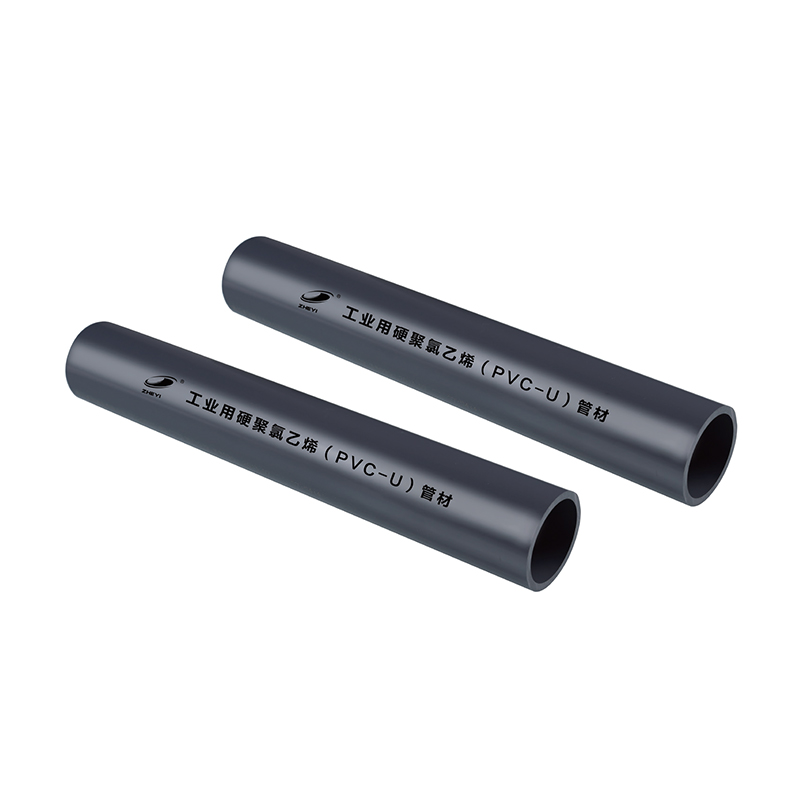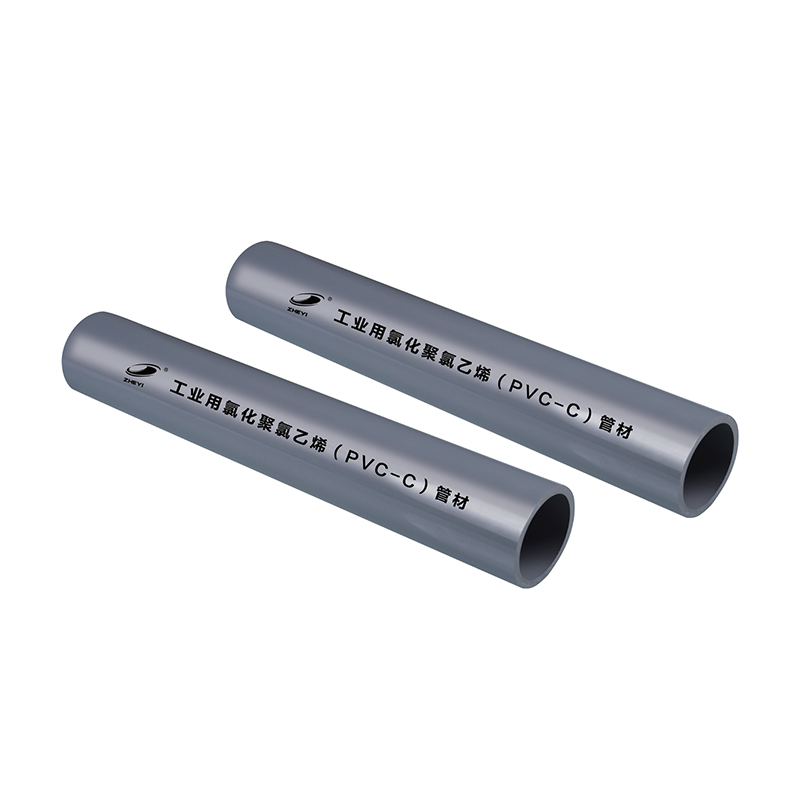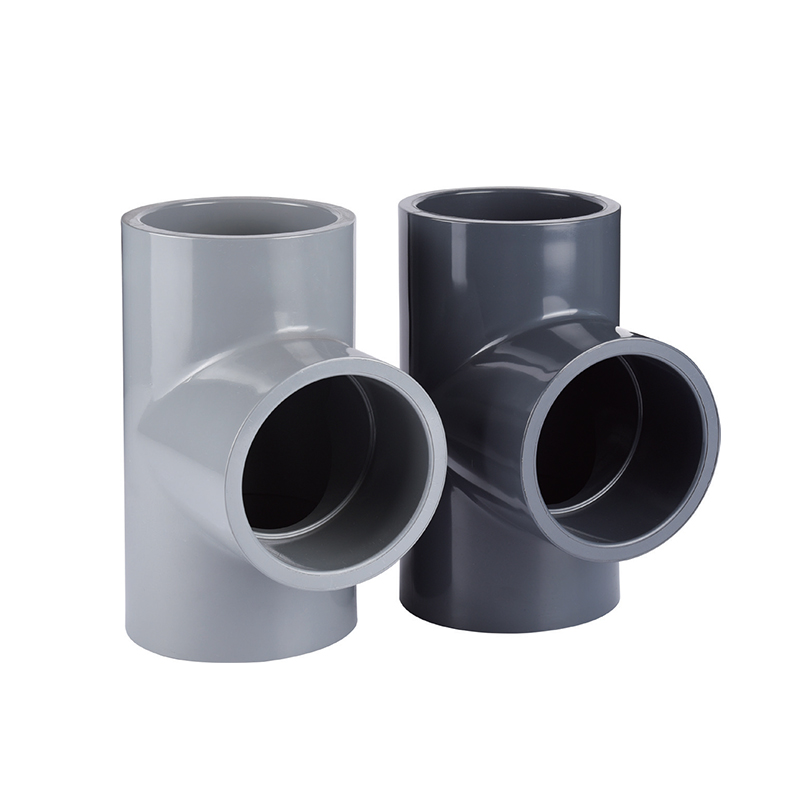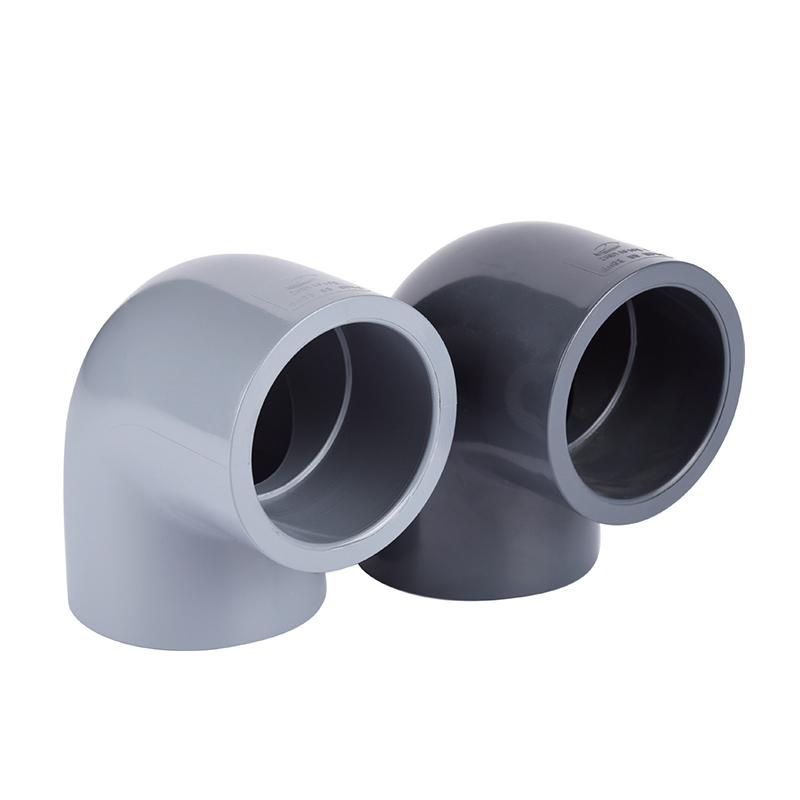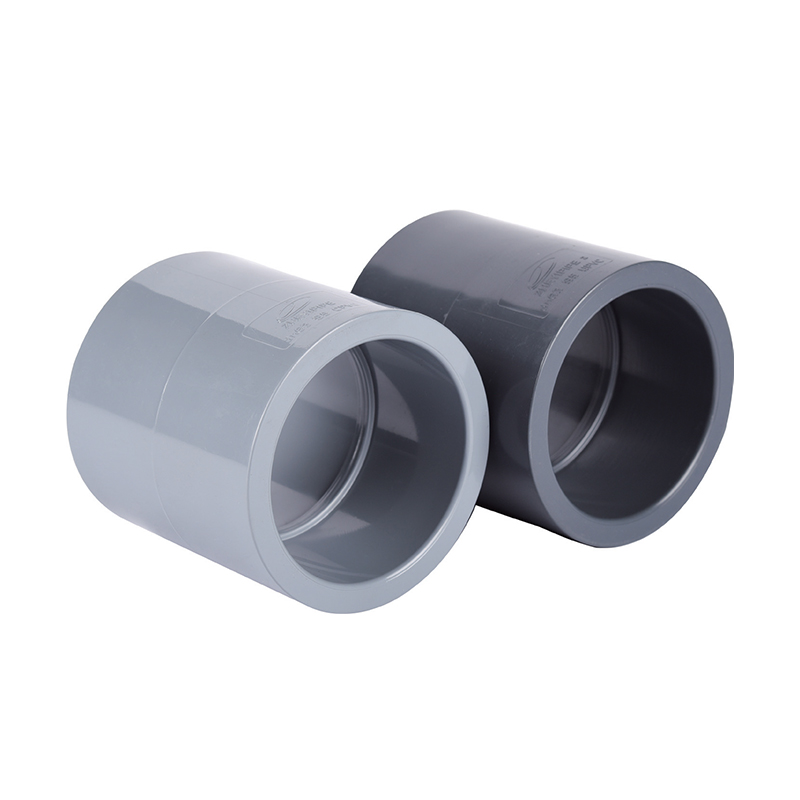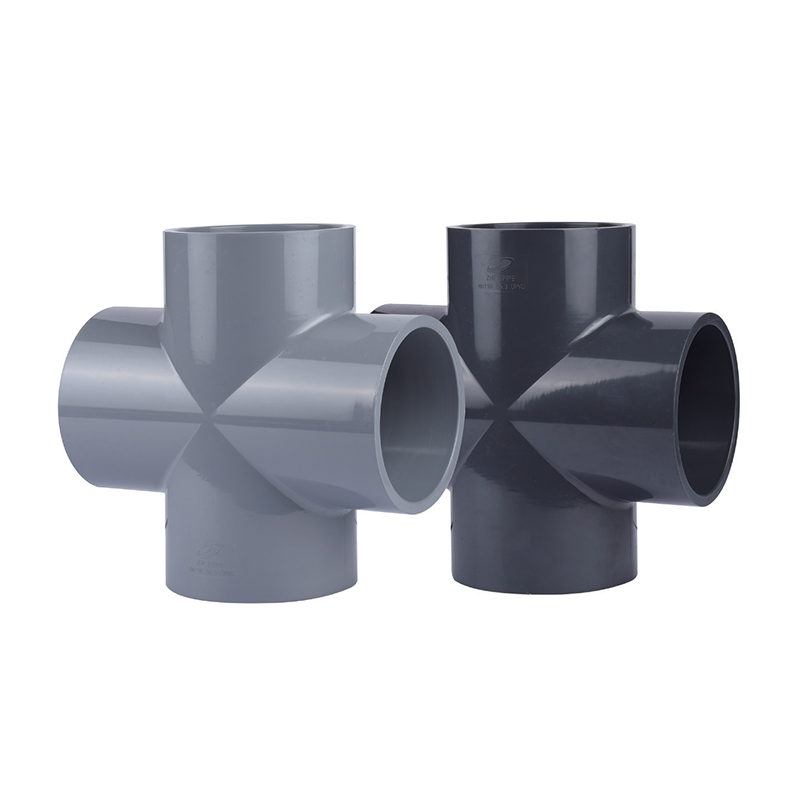1. UPVC Valves: The Cornerstone of Modern Fluid Control
In modern industry, agriculture, and municipal construction, fluid control is a core component that ensures systems run efficiently and safely. Whether it's transporting drinking water, treating industrial wastewater, or precisely irrigating farmlands, reliable valves are needed to control the flow and direction of liquids. For a long time, metal valves dominated the field, but they often faced challenges such as high cost, susceptibility to corrosion, and heavy, cumbersome installation.
In this context, the UPVC valve emerged as a revolutionary solution. UPVC (Unplasticized Polyvinyl Chloride) is a thermoplastic polymer made from vinyl chloride monomers. Unlike traditional PVC, UPVC contains no plasticizers, giving it superior strength, hardness, and excellent resistance to chemical corrosion.

SCH8O/DIN UPVC/CPVC Flang Diaphragm Valve
UPVC valves leverage these unique material advantages to fundamentally change the field of fluid control. They not only solve the shortcomings of traditional metal valves in many corrosive environments but also, with their light weight, easy installation, and cost-effectiveness, have quickly become essential components in various industries. It is no exaggeration to say that UPVC valves have evolved from a simple alternative to the very foundation of modern fluid control systems, providing more reliable and economical solutions for all sectors.
2. Analyzing the Core Advantages of UPVC Valves
2.1 Unmatched Corrosion Resistance
This is the most prominent and crucial advantage of UPVC valves. The UPVC material has a high resistance to a wide range of strong acids, alkalis, salts, and organic solvents, allowing it to work reliably for extended periods in harsh chemical environments without deteriorating. This feature makes it the material of choice for industries like chemicals, metallurgy, nuclear power, and lithium batteries. For instance, when handling corrosive fluids such as acid-alkaline solutions, ultrapure water, and industrial wastewater, UPVC valves ensure the integrity of the piping system, significantly extending its lifespan and preventing leaks and safety risks caused by corrosion.
2.2 Excellent Economic Efficiency
Compared to metal valves, UPVC valves offer significant economic benefits. Their manufacturing cost is relatively low, and their lightweight nature drastically reduces transportation and labor costs during installation. Furthermore, due to their excellent corrosion resistance and durability, UPVC valves require minimal maintenance and replacement over the long term, which lowers a company’s operational expenses. This cost-effective quality makes them particularly popular in large-scale applications like industrial water treatment and agricultural irrigation.
2.3 Lightweight and Easy Installation
The density of UPVC is much lower than that of metal, making UPVC valves lightweight and easy to handle and install. Their simple connection methods (such as solvent cement, flanged, or threaded connections) don't require complex welding equipment or specialized technicians. For example, Zheyi Pipeline (Wuhan) Co., Ltd., using advanced technology and processes from Germany and America, produces UPVC valves that are not only easy to install but are also certified under the ISO9001 Quality Management System, ensuring reliable and leak-proof connections.
2.4 Environmental and Health Considerations
UPVC valves are free from harmful substances like lead, and are non-toxic and odorless, so they won't contaminate fluids. This makes them fully compliant with the high hygiene standards of the drinking water, food, and pharmaceutical industries. For instance, Zheyi Pipeline (Wuhan) Co., Ltd. has obtained the Zhejiang Province Water-Related Products Sanitary License Approval Document, proving that its products can ensure the purity and safety of water in applications involving drinking water and electronic-grade water, contributing to human health and environmental protection.
3. A Deeper Look at the UPVC Valve Family: Main Types and Structures
The UPVC valve is not a single product but a "family" of functional components. Each type has a unique structure and working principle to meet different fluid control needs. Understanding these main types and their characteristics is crucial for selecting and applying UPVC valves correctly.
3.1 Ball Valve: The Epitome of Precise Control
The UPVC ball valve is one of the most widely used types. Its core component is a ball with a hole through it, which is rotated 90 degrees by a handle or actuator. When the hole in the ball aligns with the pipeline, the valve is open; when the ball is rotated 90 degrees, the hole is perpendicular to the pipeline, and the valve is closed.
- Structural Features: Consists of a body, a ball, a stem, and seals.
- Working Principle: Relies on the rapid rotation of the ball to quickly open or close the flow.
- Key Advantages: Simple structure, small size, good sealing performance, and quick operation.
- Applications: Pipeline systems that require fast on-off control, such as water treatment, chemical processing, and pool equipment.
3.2 Butterfly Valve: The Ideal Choice for Large-Diameter Flows
The UPVC butterfly valve is especially suitable for large-diameter pipelines and low-pressure fluid systems. Its core is a circular "disc" that is mounted on a rod in the center of the valve body's flow path.
- Structural Features: Consists of a body, a disc, a stem, and a seat.
- Working Principle: The disc rotates on the stem to control the flow or regulate the flow rate. The valve is fully open when the disc is parallel to the pipeline and fully closed when it is perpendicular.
- Key Advantages: Lightweight, compact structure, low flow resistance, and ideal for large-diameter pipelines.
- Applications: Large-volume fluid transport, such as water treatment plants, main agricultural irrigation lines, and ventilation systems.
3.3 Check Valve: The Guardian of Unidirectional Flow
The UPVC check valve, also known as a non-return valve, is unique because it only allows fluid to flow in one direction, automatically preventing backflow.
- Structural Features: Typically consists of a body and an internal disc or ball.
- Working Principle: It opens or closes automatically based on fluid pressure. The pressure of the forward flow pushes the disc open, while the reverse pressure pushes the disc against the seat, creating a seal.
- Key Advantages: Simple structure, no manual operation required, and effective at preventing fluid backflow.
- Applications: At the outlet of pumps or on the inlet pipes of water towers to prevent media from flowing back and damaging equipment when the pump shuts down.
3.4 Diaphragm Valve: The Top Choice for High-Purity and Corrosive Media
The UPVC diaphragm valve is widely used in industries with extremely high purity requirements due to its unique contamination-free design. A flexible diaphragm inside the valve body completely separates the fluid path from the mechanical parts of the stem.
- Structural Features: Consists of a body, a diaphragm, and a bonnet (including the stem and handwheel).
- Working Principle: The handwheel moves the stem up or down, compressing or releasing the diaphragm to control the flow.
- Key Advantages: Fluid does not contact the stem or other metal parts, preventing contamination; excellent sealing, making it perfect for high-purity, ultra-clean, or highly corrosive media.
- Applications: Ultrapure water systems in the semiconductor industry, pharmaceuticals, bioengineering, and the transport of strong acids and alkalis.
4. The Application Landscape of UPVC Valves: From Industrial to Civil Use
Thanks to their excellent performance, UPVC valves have successfully integrated into many key industries and everyday life, with an application range so broad it covers almost every area that requires fluid control.
4.1 Water Treatment and Drainage Systems
This is the most critical application area for UPVC valves. In municipal water supply, sewage treatment plants, and building drainage systems, UPVC valves have become indispensable components due to their corrosion resistance, non-toxicity, and easy installation. They effectively resist corrosion from chlorides and various chemicals in water, ensuring the long-term, stable operation of the piping system. Furthermore, in seawater desalination, drinking water purification, and pool facilities, UPVC valves are favored for their resistance to salt and chlorine.
4.2 Chemical and Pharmaceutical Industries
Facing strong acid, strong alkali, salt solution, and other corrosive fluid transport challenges, UPVC valves demonstrate strong resilience. They can safely and reliably control these hazardous media, effectively preventing leaks caused by valve corrosion and ensuring production safety. In the pharmaceutical and bioengineering fields, where fluid purity is strictly required, UPVC valves are an ideal choice for handling high-purity chemicals and electronic-grade water due to their stable material properties and lack of harmful leaching.
4.3 Agricultural and Horticultural Irrigation
The use of UPVC valves in agriculture has significantly improved irrigation efficiency. Their lightweight nature makes the installation and adjustment of large-scale irrigation systems exceptionally simple. At the same time, they effectively resist corrosion from fertilizers and pesticides, ensuring the durability of the irrigation system. Whether in a farm's pipeline system or a greenhouse's fertigation system, UPVC valves provide an economical and reliable control solution.
4.4 Construction and HVAC (Heating, Ventilation, and Air Conditioning)
In modern buildings, UPVC valves are widely used in cooling water and condensate drainage pipelines for HVAC systems. They not only resist scaling and corrosion but are also easy to install and have low maintenance costs, which helps reduce a building's operating expenses. In residential building plumbing systems, UPVC valves are also a mainstream choice because of their non-toxic, durable, and economical characteristics.
5. Proper Selection and Installation Essentials for UPVC Valves
The full performance of a UPVC valve depends not only on its quality but also on correct selection and standard installation. Neglecting these crucial steps can lead to the valve's lifespan shortening, decreased performance, or even system failure.
5.1 Selection Considerations: Matching Your Needs
When selecting a UPVC valve, multiple factors must be considered to ensure it fully meets the application's requirements.
- Media Characteristics: This is the top priority. You must confirm the chemical properties (e.g., acid, alkali, salt solution), operating temperature, and particulate content of the fluid being transported. While UPVC is highly corrosion-resistant, its pressure rating decreases at high temperatures, and some highly oxidizing media may exceed its tolerance.
- Operating Parameters: Clearly define the system's working pressure and flow rate. The pressure rating of UPVC valves is typically lower than that of metal valves, and it decreases as the temperature rises. Therefore, it is essential to refer to the manufacturer's provided pressure-temperature curve to select the appropriate model.
- Functional Requirements: According to the application purpose, choose the appropriate valve type. If you need to quickly shut off fluid flow, a ball valve is ideal; if you need to control the flow rate in large-diameter pipes, a butterfly valve is more suitable; and to prevent backflow, a check valve is indispensable.
- Connection Method: Common UPVC valve connection methods are solvent cement, flanged, and threaded. The chosen method must be compatible with the existing piping system to ensure a reliable and leak-proof connection.
5.2 Installation Guide: Ensuring Performance and Longevity
Proper installation is key to ensuring the long-term, stable operation of a UPVC valve.
- Pre-Installation Preparation: Before installation, carefully inspect the valve for cracks or damage, and ensure the interior is clean and free of debris. Check that the end of the pipe is flat and smooth, and wipe it clean with a cloth.
- Correct Connection Method:
- For solvent cement valves, use a dedicated UPVC cement. Apply the cement evenly and in an appropriate amount, then quickly insert the pipe and rotate it a quarter turn to ensure even distribution of the cement, holding it for a few seconds to complete the initial curing.
- For flanged valves, ensure the flanges are aligned and tighten the bolts evenly in a diagonal sequence to prevent deformation of the flange or valve body from uneven force.
- Avoid Excessive Stress: The valve should be installed in an easily accessible location for operation and maintenance, and it should be protected from the weight of the pipe, vibration, or external tension. If necessary, provide additional support for the pipes and valves to prevent cracking caused by improper stress.
- Post-Installation System Test: After installation, a rigorous pressure test should be conducted to check for leaks at all connection points, ensuring the entire system is properly sealed.
6. Maintenance and Troubleshooting: Extending the Life of UPVC Valves
While UPVC valves are known for their durability and low maintenance needs, regular inspection and correct troubleshooting are still key to ensuring their long-term, reliable operation. Proper maintenance not only extends the valve's lifespan but also helps prevent unexpected failures that could lead to production downtime or safety hazards.
6.1 Routine Maintenance Practices
- Regular Inspection: Develop a routine inspection habit. Primarily check for signs of leakage at the valve's connections and sealing points. Leaks often appear as drips, dampness, or crystallization. Also, check the valve body for any cracks or physical damage.
- Keep it Clean: Dirt, dust, or chemical residue on the valve's exterior can corrode the surface or affect the smooth operation of the handle. Regularly wipe the valve with clean water and a soft cloth to keep it clean.
- Periodic Operation: For valves that remain in an open or closed position for extended periods, they should be manually operated (e.g., once per quarter) a few times. This prevents internal components like the ball, disc, or diaphragm from seizing up and ensures the valve can be operated smoothly when needed.
6.2 Common Troubleshooting and Solutions
- Valve Leakage: This is the most common issue.
- Causes: The seal (e.g., O-ring or seat) may be aging, worn, or chemically corroded; the connections may be loose, or the cement may have failed; or micro-cracks may have formed in the valve body due to improper stress during installation.
- Solutions: First, check and tighten the connection bolts. If the seal is damaged, it should be replaced immediately. If the valve body is cracked, the entire valve must be replaced.
- Stiff Operation or Seizing:
- Causes: Debris or particles in the fluid may have accumulated inside the valve, hindering the movement of the valve's core; or the valve may have been subjected to improper external force during installation or use, causing the stem or body to deform.
- Solutions: Try disassembling the valve for a thorough cleaning. Check if the valve is under undue pipeline stress, and add pipe support if necessary. If internal parts are severely worn, replace the components or the entire valve.
- Abnormal Flow:
- Causes: The valve may not be fully open or closed, or there might be a blockage elsewhere in the pipeline system.
- Solutions: Check if the valve handle or actuator is in the correct position. If the valve is not the issue, check the rest of the piping system for blockages.
6.3 Preventive Maintenance: An Ounce of Prevention
In addition to routine maintenance, establishing a systematic preventive maintenance plan is essential. For example, based on the operating environment and the corrosiveness of the fluid, seals and other consumables should be replaced periodically rather than waiting for a failure to occur. This is especially important for critical applications in the chemical and pharmaceutical industries that require strict fluid control, as it minimizes risk and ensures continuous, stable production.


 +86-15258772971
+86-15258772971
 dinys009@163.com
dinys009@163.com

 English
English 한국어
한국어 Español
Español عربى
عربى


